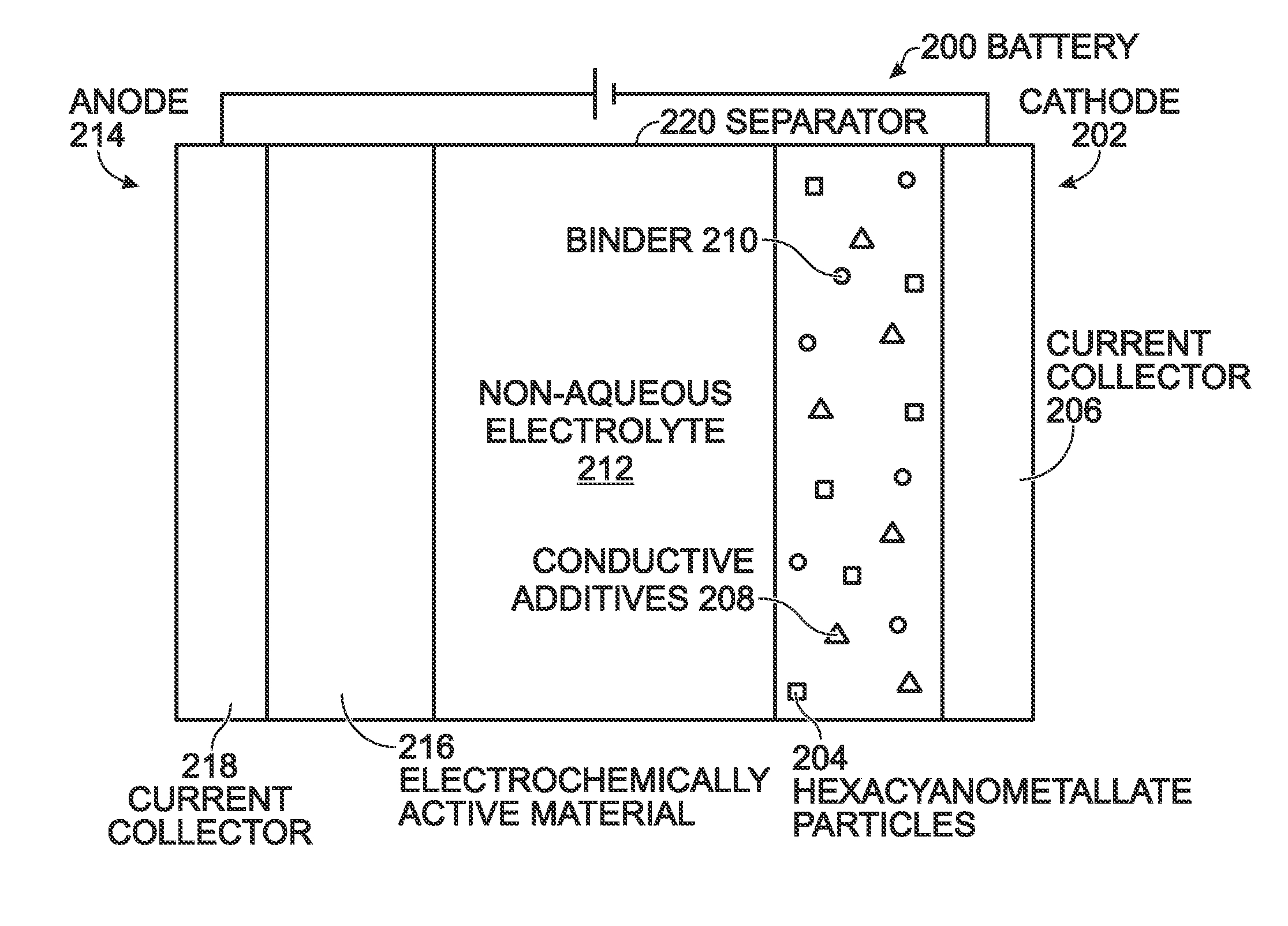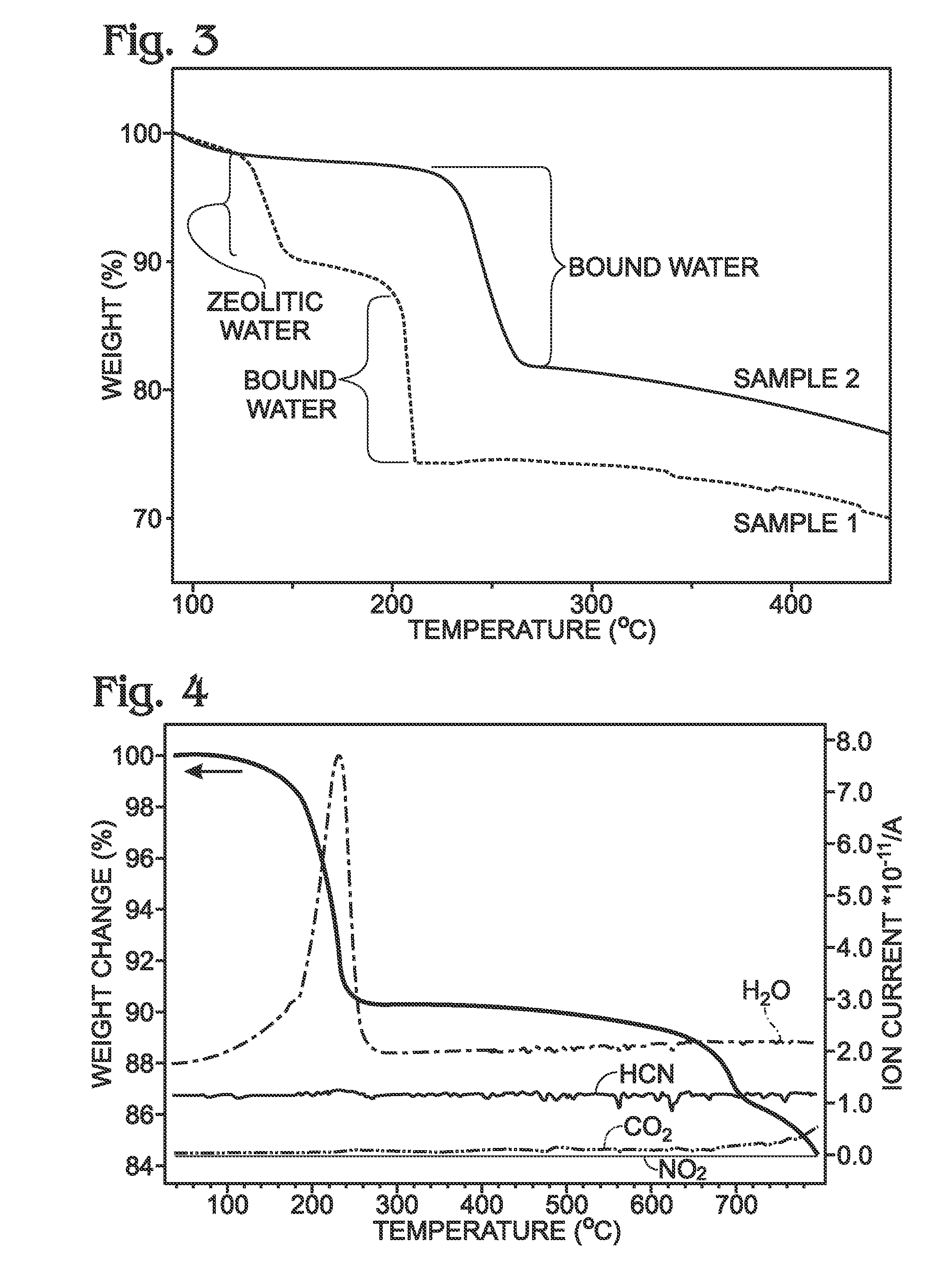Prussian Blue Analogue Electrodes without Zeolitic Water Content
a technology of prussian blue analogue electrodes and zeolitic water content, which is applied in the field of electrochemical batteries, can solve the problems of even more difficult removal of bound water in these pbas
- Summary
- Abstract
- Description
- Claims
- Application Information
AI Technical Summary
Benefits of technology
Problems solved by technology
Method used
Image
Examples
example 1
NaXMnMFeN(CN)Z.d[H2O]ZEO.e[H2O]BND
[0073]FIG. 3 is a thermogravimetric (TGA) graph comparing the water content of a conventional PBA against the PBA disclosed herein. After PBA synthesis using a precipitation process, the PBA particles were filtered and dried. The drying temperature of the conventional PBA is typically lower than 100 degree C., with a vacuum atmosphere, in N2, or in ambient air. Wessells, for example, dried their PBA at room temperature under vacuum prior to coating a current collector [14]. Sample1 is a conventional PBA with the specific name of sodium manganese hexacyanoferrate, which was dried at 100 degrees C. after synthesis. Conventional PBAs, such as the ones described by Wessells [14] all belong to this group since the drying temperature is below 100 degrees C. Sample 1 was subjected to thermogravimetric analysis (TGA) to measure the sample weigh loss while increasing the temperature. Two weight loss regions were observed: at the temperature between 130 and ...
example 2
NaXFeMFeN(CN)Z.d[H2O]ZEO.e[H2O]BND
[0079]FIG. 8 shows TGA curves depicting the weight loss of PBA with (Sample 3) and without (Sample 4) zeolitic water. Zeolitic water also affects the performance of NaXFeMFeN(CN)Z.d1[H2O]ZEO.e1[H2O]BND. Sample 3 was dried at 100 degrees C. after synthesis. Sample 3 was subjected to TGA analysis, showing that zeolitic water was released from the lattice at temperatures between 70 and 150 degrees C., and the bound water was released from the lattice at temperatures higher than 200 degrees C. Therefore, Sample 3 can be represented as NaXFeMFeN(CN)Z.d1[H2O]ZEO.e1[H2O]BND, where d1>0. In contrast, Sample 4 had a dehydration process performed at 150 degrees C., in addition to the drying process at 100 degrees C. after synthesis. The TGA data clearly indicates Sample 4 does not contain zeolitic water. Therefore, it can be represented as
NaXFeMFeN(CN)Z.d[H2O]ZEO.e[H2O]BND where d=0 and e1≧e>0.
[0080]FIGS. 9A and 9B are graphs depicting the galvanostatic char...
PUM
 Login to View More
Login to View More Abstract
Description
Claims
Application Information
 Login to View More
Login to View More - R&D
- Intellectual Property
- Life Sciences
- Materials
- Tech Scout
- Unparalleled Data Quality
- Higher Quality Content
- 60% Fewer Hallucinations
Browse by: Latest US Patents, China's latest patents, Technical Efficacy Thesaurus, Application Domain, Technology Topic, Popular Technical Reports.
© 2025 PatSnap. All rights reserved.Legal|Privacy policy|Modern Slavery Act Transparency Statement|Sitemap|About US| Contact US: help@patsnap.com



